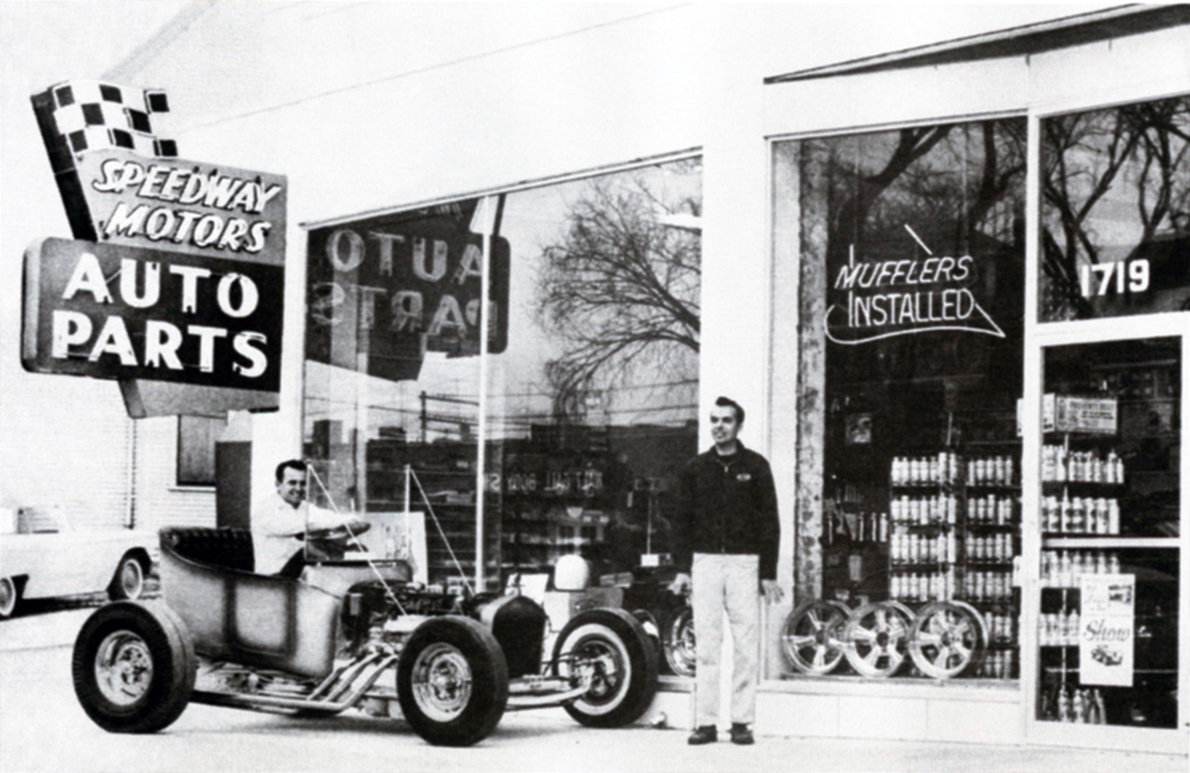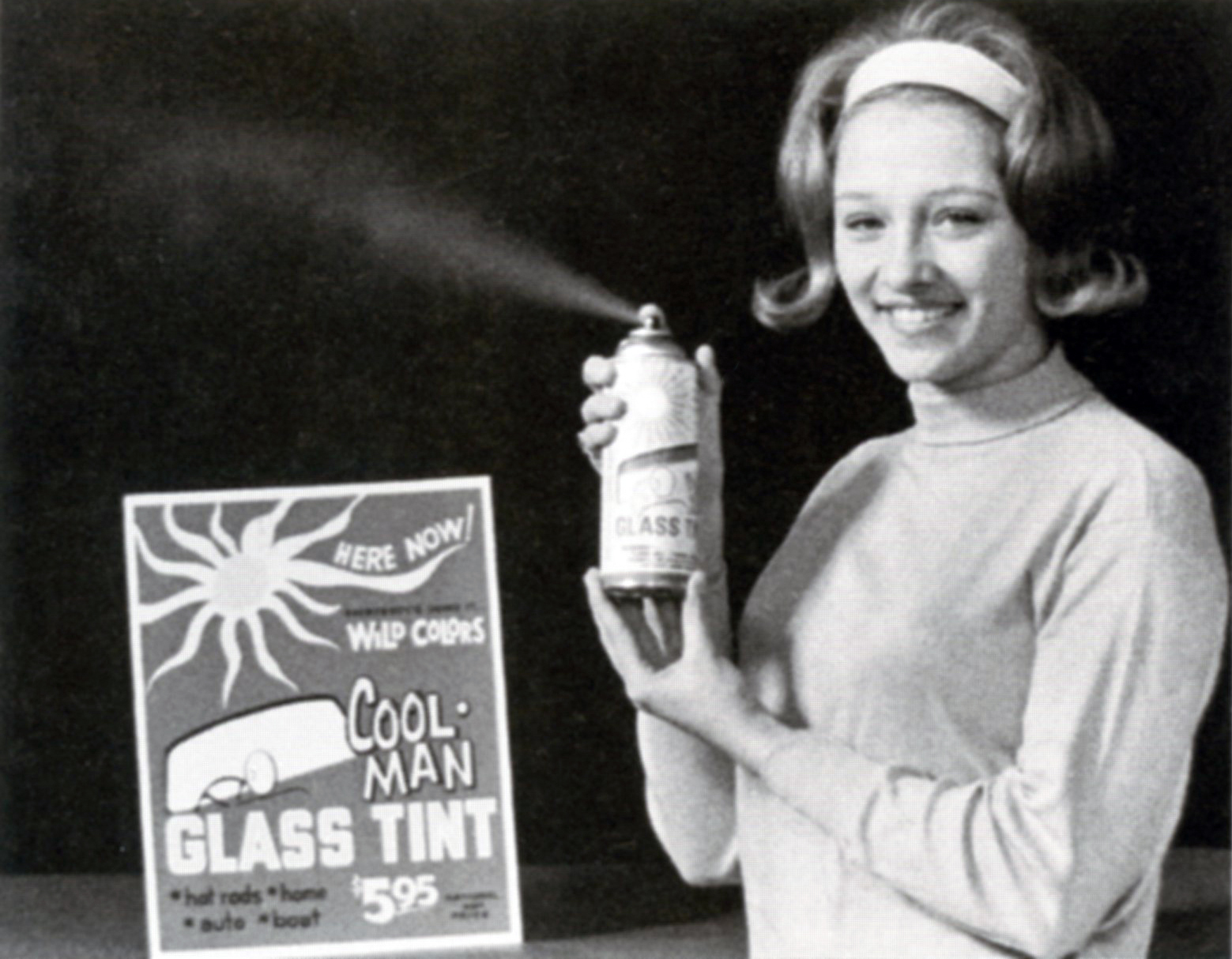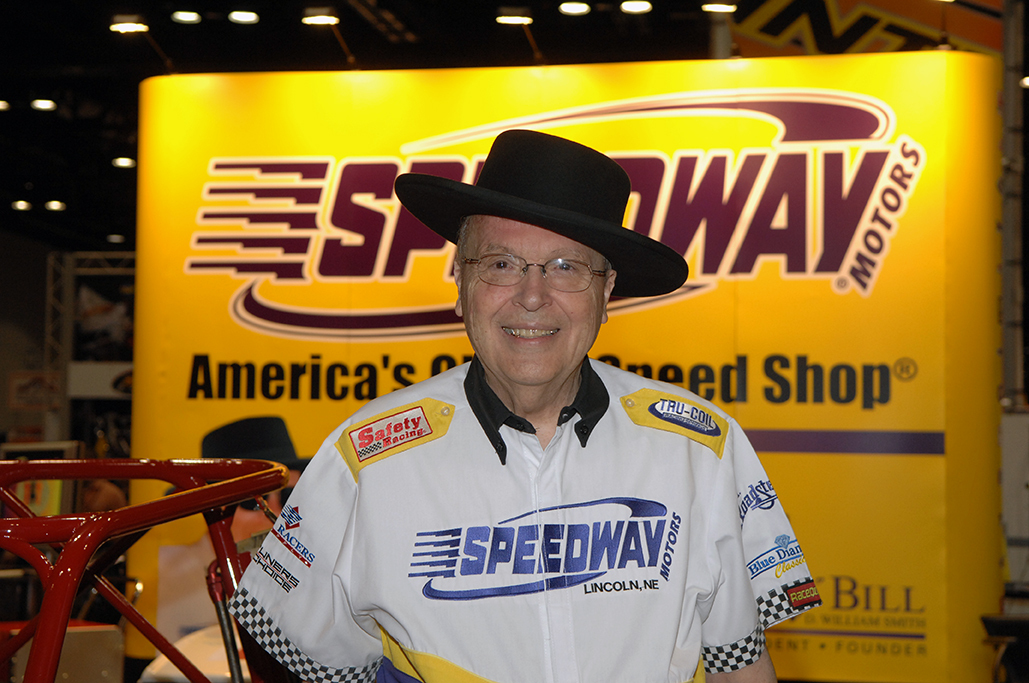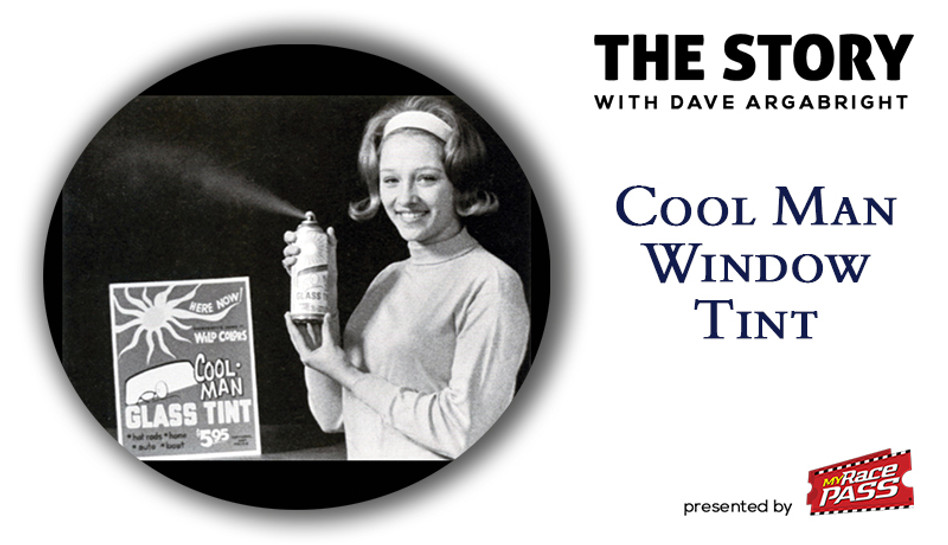These days people recognize Speedway Motors as one of the largest and most dynamic performance-related companies on the planet. Based in Lincoln, Nebraska, Speedway is a massive operation and they play a significant role in anything related to motorsports and the performance industry, providing parts and accessories to enthusiasts all over the world.
But Speedway wasn't always a giant company. Speedway Motors was founded in 1952 by Bill and Joyce Smith, who grew the business from a tiny parts counter to a large entity. Both Bill and Joyce are no longer with us, and their sons Carson, Clay, Craig, and Jason have continued to grow and strengthen the company. Unfortunately, Jason Smith passed away a couple of years ago.
Speedy Bill Smith was one of the most dynamic and interesting people I’ve ever known. In 2009 I had the privilege of helping Bill with his autobiography, Fast Company. What a great experience…I could sit and listen to Speedy Bill tell stories for the next hundred years and then some. Bill had a real impact on motorsports and the performance industry, and his book ensures that his legacy is known for generations to come. No matter who you are or what you do, if you’re into racing or performance in any way, you should read Bill’s book. Please take my word for it; Bill’s book provides a very important backstory to modern racing and performance, with tons of great life lessons along the way. Bill was an entertaining guy and he wrote an entertaining book.
Here’s a fun story from the book that I often recall. This excerpt perfectly illustrates the way Speedy Bill lived and operated: be bold, be audacious, be tenacious, and…win, win, win! -- DA
One idea that always intrigued me was creating a product that everyone in the world would want. I purchased a lot of products from various manufacturers, and I always struggled to get enough margins to survive. But if I created and manufactured the product myself, I would have a much greater margin. So I was always looking for ideas that might bring the world to Lincoln, Nebraska.
In the early 1960s I hit upon an idea that was like a dream come true.
For a while.

Speedy Bill in front of the Speedway Motors shop at 1719 N Street in Lincoln.
Drag racing cars were running Plexiglas side windows during this time, and a lot of them ran at night, particularly in California. You’d see cars like a ’34 Ford coupe with a plastic windshield and side windows, heavily tinted. Orange, green, red, all kinds of colors. They would often light up the inside of the car, so you would see those colors very clearly when the car went down the strip.
Many performance and appearance products have roots in drag racing; if they saw it on the strip, they wanted it on their street car. It’s all about ego, and being “cool.” They wanted people to think their street car had been raced on the strip. Big tires on the back, small tires on the front. “Big and littles,” they call that in the performance business.
It’s the same reason Michael Jordan sold a lot of athletic shoes; if you saw Michael wearing them, you wanted to wear them, too. Emulation.
Everybody was buzzing about these drag racing cars with tinted windows, and how cool they looked. It got me to thinking: What if I came up with something that easily allowed people to tint the glass in their street car? Problem was, how do you tint glass? There were already people out there selling various tinting products, but they weren’t very good.
I came up with the idea of putting a tinting agent in an aerosol can, so that almost anybody could apply it. I came up with all kinds of wild colors, with wild names to boot. Greens, blues, and reds.
Boy, I figured this product would really be something! Everybody would want it!
I came up with a catchy name: “Cool Man Glass Tint.” Everybody wanted to be a cool man, right?
But now I had to figure out how to get it out there, and bring the product to market. I knew exactly the person I needed: Herb Goldstein.
Herbie’s dad was an old-time auto parts and accessory salesman out of Chicago, and Herbie took up the business from his dad. He later became famous as “Mr. Phone,” and he was a phenomenon that is hard to describe. Herbie could sell a monkey a new tail, and was just about as dynamic as anyone I’ve ever known.
I met Herbie through my relationship with Ray Bleiweis, who owned a bumper replating shop who began selling chrome wheels. This was very early in the chrome business, and these guys were taking wheels out of junkyards and chroming them without first taking the center out of the wheel. Anybody who knows the chrome process now knows that if you do this, it leaves all kinds of yellow hue around where the center meets the rim. But it was a function of price, and I could sell a chrome wheel in Lincoln for $14.95 each, and people stood in line to get them. Herbie was the salesman for Bleiweis, and that’s how I got to know him.
I bought a lot of those chrome wheels from Herb, and now it was time to get him over on my side. He agreed, and came on to help me market Cool Man Glass Tint.
I found a company in Connecticut that manufactured aerosol products, and made a deal for them to make Cool Man Glass Tint. The product was actually pretty simple: clear lacquer with a tinting agent added. Our installation instructions were simple, too. Just like when you wash your driveway with a sweeping motion on the water hose; you apply the tint the same way. Keep the can moving, and the liquid flowing, to cover the glass from top to bottom.
Of course, some people were more talented in doing this than others. The end results were kind of mixed; some of it looked like a three-year-old kid had applied it, and some of it looked pretty good.
It was probably hell to get the stuff off your windows later on when you changed your mind, but nobody complained in those days. Today would be a completely different story, of course. Today it’s all about complaining. People complain about things from the time they wake up until they go to bed at night.

A promotional ad for Cool Man in the early 1960s.
Herbie got busy on the sales end, and next thing you know this thing really took off. Everybody wanted Cool Man Glass Tint! Nobody else had it, and they wanted it because it made their car—and them—look cool. They would put up with the difficulty of installing it properly, or the difficulty of removing it down the road, because they wanted to be cool today. It was something that changed their car to something that made people say, “Oh, gee, that is a ‘Cool Man Tint’ job!”
Pretty soon I was literally ordering it by the boxcar load. It was an amazing process. Herb would sell 50 cases to a guy in Chicago, and one week later would call me back saying, “Bill, send that guy another 50 cases!”
“He can’t be selling it that fast, Herbie…he must be throwing it in the lake up there! You can’t sell it to customers that fast!”
Herbie was a real go-getter. He would ship the guy another 50 cases whether he ordered them or not, and then talk him into keeping it. Whatever it took to make the deal, Herbie could make it happen. And believe it or not, I had no trouble getting paid.
I was paying Herbie a 15-percent commission on everything he sold. A typical factory rep at that time made anywhere from three to seven percent; that was the going rate. Exhaust systems, seat covers, whatever, as a factory rep that was the range of your percentage. Obviously I was paying Herbie quite a premium, but I always figured that if I’d pay the guy more, he’d perform better. That was my thinking, and it worked perfectly with Herbie.
We had success with Cool Man Glass Tint for a year, maybe 18 months, before the fad began to wane. It sold for $5.95 per can, and of course when it became wildly popular the competition began to appear. Pretty soon people were selling similar products for $3.95 per can. Soon enough, the demand faded and the product died away and became nothing but a memory.
But I made enough money from Cool Man Glass Tint that when I bought the race track here in Lincoln (as a sucker for a bargain) for $5,000 from my former partners, I used my Cool Man profits to make the purchase. Of course I eventually lost all my money in the track, so it’s another of those “easy-come, easy-go” stories.
Soon enough I was back to my bread and butter, selling gear shift knobs and lug nuts. It was another one of those “up” periods, and through all the years the ups and downs have leveled out pretty well.

Speedy Bill Smith in 2007. (Bob Hesser photo)
The Story - A Most Splendid Adventure
The Story - Big!: A Salute to Tom Bigelow
The Story - Sadness: Thinking About Scott Bloomquist
Check out Dave's books here: https://daveargabright.com/
More about MyRacePass here: https://www.myracepass.com/
-30-

